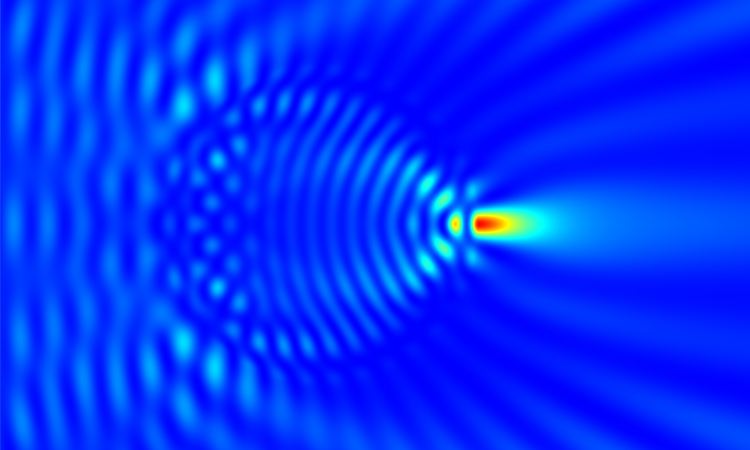Feature
Photonic Nanojets
Microspheres, microcylinders and more complex dielectric structures can create nanoscale concentrations of directed energy. Thanks to advances in fabrication techniques, these optical jets could soon find their way into applications.
 Simulation of a photonic nanojet, created by a traditional microcylinder (diameter 2.0 µm, refractive index 1.59) illuminated with 405-nm light. [Courtesy of the authors]
Simulation of a photonic nanojet, created by a traditional microcylinder (diameter 2.0 µm, refractive index 1.59) illuminated with 405-nm light. [Courtesy of the authors]
At least two millennia ago, it was known that small water droplets could cause “sunburns” to form on plants. The sunburns are the result of photonic nanojets (PNJs)—highly concentrated, propagating beams of light generated by certain types of dielectric structures (commonly spherical and cylindrical ones) on the order of a few wavelengths in size. Typically, the PNJ hotspot—the location of greatest intensity—is less than half a wavelength in width and extends more than a wavelength in length. In the case of the sunlit droplets, the concentrated energy created by each droplet has a typical intensity of 10 to 50 times that of the incident light.
…Log in or become a member to view the full text of this article.
This article may be available for purchase via the search at Optica Publishing Group.
Optica Members get the full text of Optics & Photonics News, plus a variety of other member benefits.
